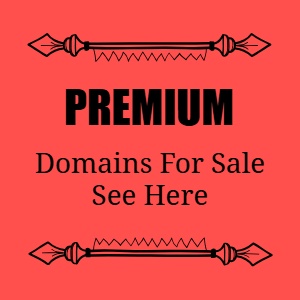
When you're ready to sell your domain, pricing it correctly can mean the difference between a quick sale and months of waiting. You'll need to strike that sweet spot between market value and buyer appeal, but it's not just about picking a number. Today's domain marketplace is driven by data, comparable sales, and strategic positioning. Whether you've got a premium keyword domain or a brandable gem, understanding current market dynamics will help you maximize your return while ensuring a timely exit.
Key Takeaways
- Price your domain 10-15% below market value to attract immediate attention and generate serious buyer interest.
- Research recent sales of similar domains within the past 6 months to determine a realistic quick-sale price point.
- Highlight key selling points like brandability and keyword relevance in your listing to justify pricing and attract motivated buyers.
- Set a firm but reasonable price that allows minimal negotiation room to expedite the sales process.
- Use domain appraisal tools like Estibot or GoDaddy to establish a baseline market value before applying quick-sale discount.
Research Your Domain's Market Value

How can you determine if your domain is worth $100 or $100,000? Start by conducting a thorough domain appraisal using established valuation tools like Estibot, GoDaddy, or Sedo. These platforms analyze factors including keyword relevance, search volume, and historical sales data.
Cross-reference your value estimation with recent sales of similar domains in your niche. Check domain marketplaces and auction sites to understand current market trends and buyer preferences. Pay attention to domains that share characteristics with yours, such as length, extension, and industry relevance.
Consider hiring a professional appraiser for high-value domains. They'll provide detailed market analysis and comparable sales data, helping you set a competitive price. Don't forget to factor in your domain's age, brandability, and search engine optimization potential when determining its final value.
The domain extension type plays a crucial role in valuation, with .com domains typically commanding the highest prices in the market.
Analyze Recent Sales of Similar Domains
Looking at recent domain sales provides concrete evidence of what buyers are willing to pay in today's market. Start by examining sales data from popular domain marketplaces like Sedo, GoDaddy, and Afternic to identify market trends for domains similar to yours.
While used domain benefits can command higher prices due to established traffic and backlinks, proper valuation remains essential. Focus on domains that have sold within the last 6-12 months, as they'll reflect current market conditions most accurately. Pay attention to key characteristics like length, extension (.com, .net, etc.), and keyword relevance. Your competitor analysis should include both exact-match sales and comparable alternatives.
Document sale prices of domains in your niche and calculate their average selling price. Remember that factors like brandability, memorability, and commercial potential greatly influence a domain's value. This data-driven approach will help you set a realistic price point that attracts serious buyers.
Consider Your Domain's Key Selling Points

When evaluating your domain's worth, identifying its unique strengths can greatly impact its market value. You'll need to analyze your domain's core attributes that make it attractive to potential buyers.
- Keywords relevance – Consider if your domain contains high-value search terms that align with current market trends or industry-specific terminology
- Branding potential – Assess whether your domain is memorable, easy to spell, and versatile enough to support various business models
- Technical characteristics – Evaluate factors like length (shorter domains typically command higher prices), extension type (.com domains generally sell for more), and whether it contains hyphens or numbers
Remember that buyers often prioritize domains that offer immediate recognition and marketing advantages. Your domain's strengths in these areas will directly influence its perceived value and ultimately, its selling price.
Understanding different domain name types like gTLD, ccTLD, and sTLD can help you position your domain more effectively in the marketplace.
Set a Competitive Price Range
Once you've identified your domain's key selling points, establishing a competitive price range requires careful market analysis and strategic positioning. You'll need to study current market trends and understand pricing psychology to set an amount that attracts buyers while maximizing your return. Checking your domain's WHOIS privacy status can impact its perceived value and trustworthiness to potential buyers.
| Price Range | Market Response |
|---|---|
| Below Market | Quick sale but lower profit |
| Market Value | Balanced opportunity |
| Premium | Longer sale cycle |
Your pricing strategy should reflect your domain's value while remaining realistic about market conditions. Consider setting a slightly higher initial price to leave room for negotiation, but don't overprice to the point of deterring serious buyers. Research similar domain sales and monitor current listings to guarantee your price aligns with market expectations.
Develop Your Pricing Strategy

Three essential components form the foundation of an effective domain pricing strategy: market positioning, timing, and flexibility. When applying domain valuation methods, you'll need to balance buyer expectations with your investment goals. Pricing psychology plays a vital role in attracting serious buyers while maintaining your domain's perceived value.
- Start with a higher initial price to leave room for negotiation, but confirm it's within 15-20% of your target sale price
- Implement time-sensitive offers to create urgency, such as limited-time discounts or early-bird pricing
- Monitor market trends and adjust your price quarterly based on comparable domain sales data
Remember to document your pricing decisions and track buyer responses to refine your strategy. You'll maximize your chances of a successful sale by staying responsive to market dynamics. Understanding DNS resolution speed can impact your domain's value, as buyers often consider performance factors in their purchasing decisions.
Frequently Asked Questions
Should I List My Domain Price as "Make an Offer"?
You'll face pros and cons with "make an offer." While it invites negotiations, market perception often views unlisted prices as overvalued. You're better off setting a clear, competitive price to attract serious buyers.
How Long Should I Wait Before Lowering My Domain Price?
Monitor market trends for 30-45 days before adjusting your price. Understanding buyer psychology, you'll notice serious inquiries typically come within this window. If you're not getting traction, consider a 10-15% reduction.
Is It Better to Sell Through a Broker or Independently?
Ever wonder about the best sales route? While brokers offer valuable connections and higher success rates (typically 30-40%), independent sales save you commission fees. Your choice depends on domain value and your marketing expertise.
Can I Negotiate Payment Terms With Potential Domain Buyers?
You can offer price flexibility and payment plans to attract serious buyers. It's common to accept installments, escrow services, or financing options. Just make certain you've got clear terms and maintain control until full payment's received.
Should I Mention My Domain's Previous Sale Prices to Potential Buyers?
You shouldn't reveal previous sale prices, as it can limit your pricing strategies and negotiating power. Instead, focus on current market trends and your domain's value proposition to maximize your potential return.
See The Next Blog Post
Pricing your domain for a quick sale is like setting the perfect temperature – too hot or too cold won't attract buyers. You'll need to leverage market data, comparable sales, and domain appraisals to pinpoint your sweet spot. By positioning your price 15-20% below market value while highlighting your domain's unique strengths, you're setting yourself up for a swift, profitable transaction in today's competitive digital marketplace.














